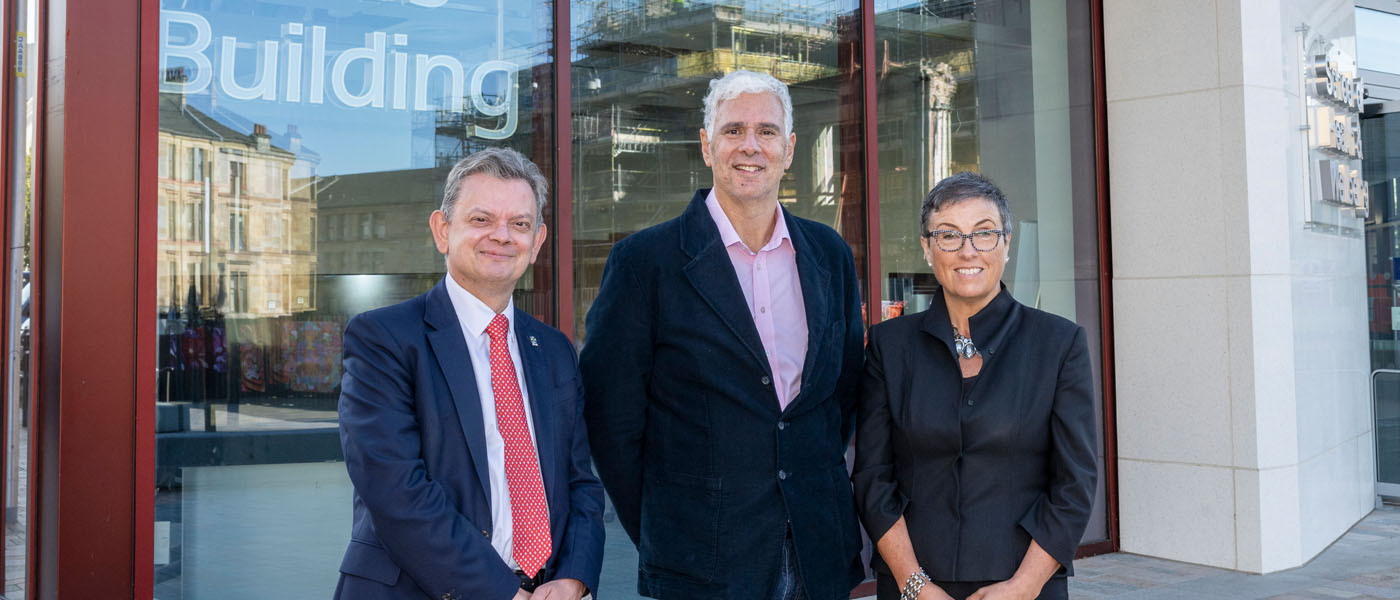Celebrating the new home of the School of Health & Wellbeing

Mark Pears CBE (centre) with the Principal and Jill Pell, Head of the School of Health & Wellbeing
On Tuesday 12 September we held the official opening ceremony for the Clarice Pears Building, our brand-new home for the School of Health & Wellbeing. Donors to the building and partners of the school were invited to celebrate this historic moment.
On arrival at the building, guests were greeted by bagpipes before being welcomed by the Principal, Professor Sir Anton Muscatelli, who gave an insight into the priorities of the school and the role of this cutting-edge new space.
“The Clarice Pears Building stands as a public statement of the University’s intent to understand and tackle complex health issues,” he said. "Bringing together research and teaching groups from ten separate sites around the city, the School of Health & Wellbeing will be able to pursue even more vigorously its mission to improve health and wellbeing and reduce health inequalities locally, nationally and globally.”
Guests were treated to a performance of 'Where We Belong', a song created especially for the occasion. Written by composer Penny Stone, the song reflects on the themes of partnership, inclusivity and community which are central to the space.
Mark Pears CBE then joined the Principal on stage to officially open the building. Mark and his brothers, Trevor and David, founded Pears Foundation, which donated £5 million towards the construction of the building. The building is named in honour of their mother, who was born in Glasgow’s Shawlands district and later lived in London. Clarice Pears was very proud of her Scottish roots.
The opening event also included a stimulating discussion session entitled Health for the Future, featuring an esteemed panel of experts including Professor Jill Pell, Head of School; Professor Rory O’Connor, Chair in Health Psychology; and Martina Johnston-Gray of North-West Glasgow Voluntary Sector Network, a member of the school’s international advisory panel.
Following the official opening, guests were able to visit the interactive displays in the exhibition area and join guided tours of the building. The tours gave guests a chance to explore the space and gain a deeper understanding of how the building’s design will enable collaboration and support the exchange of knowledge across a diverse range of disciplines.

